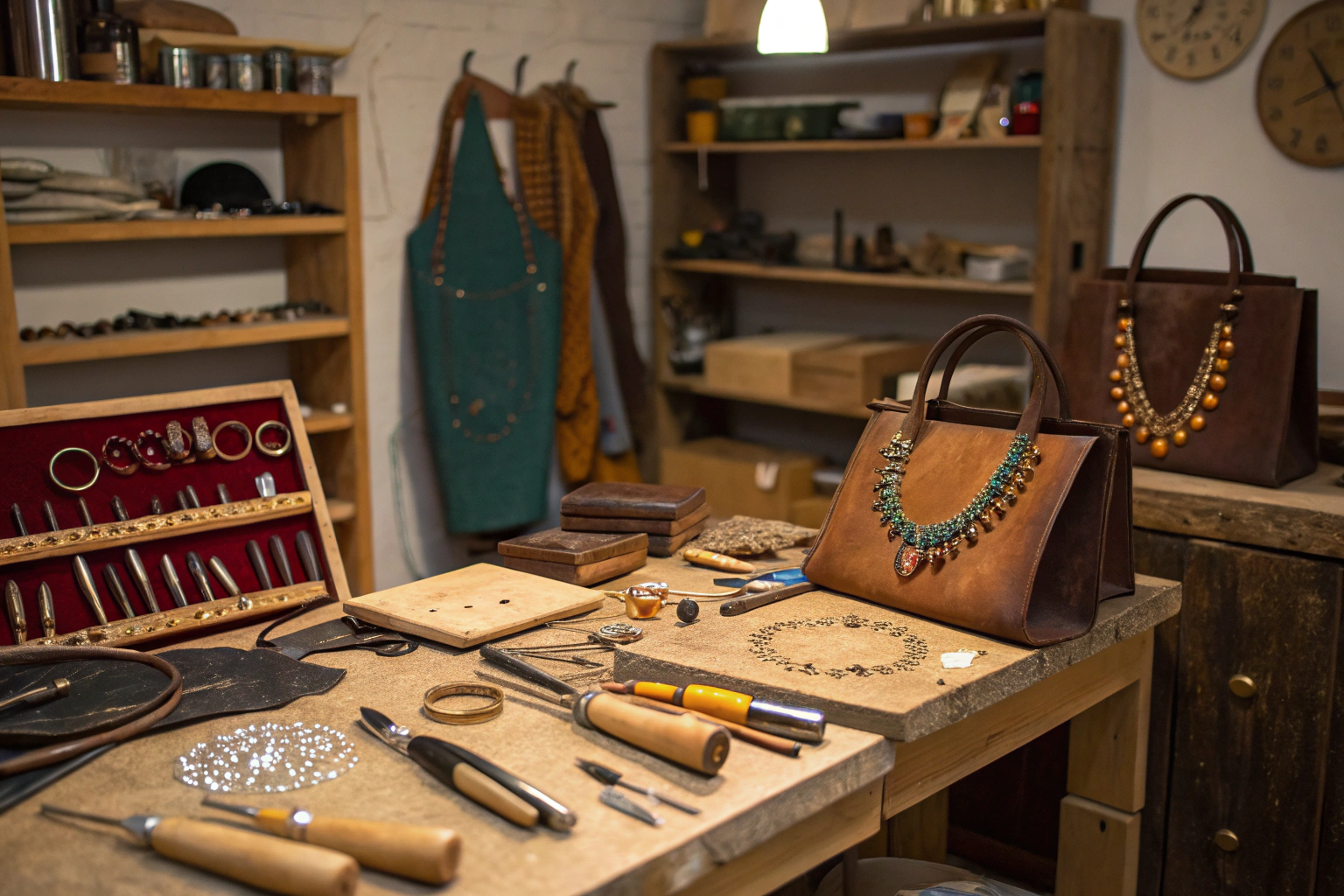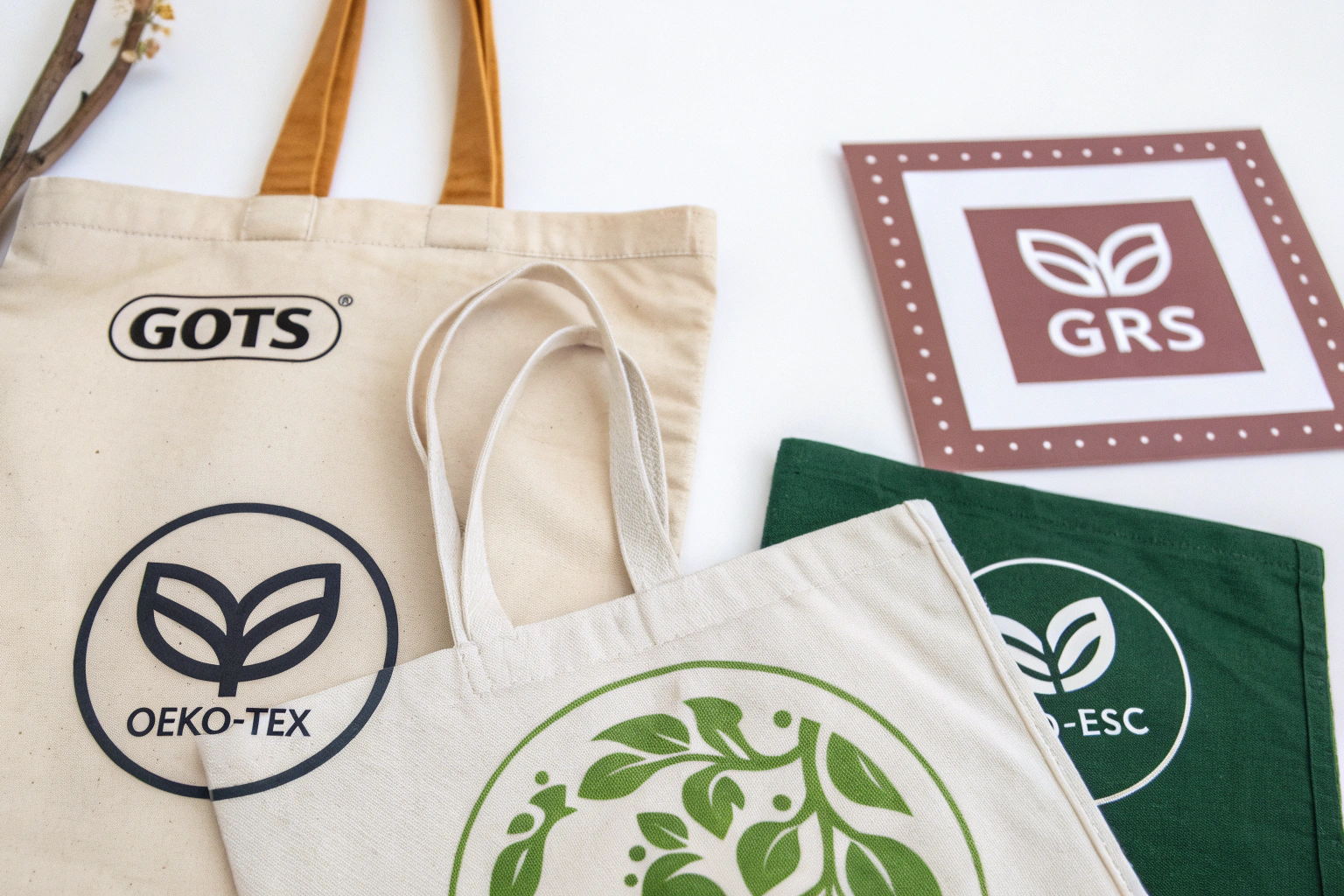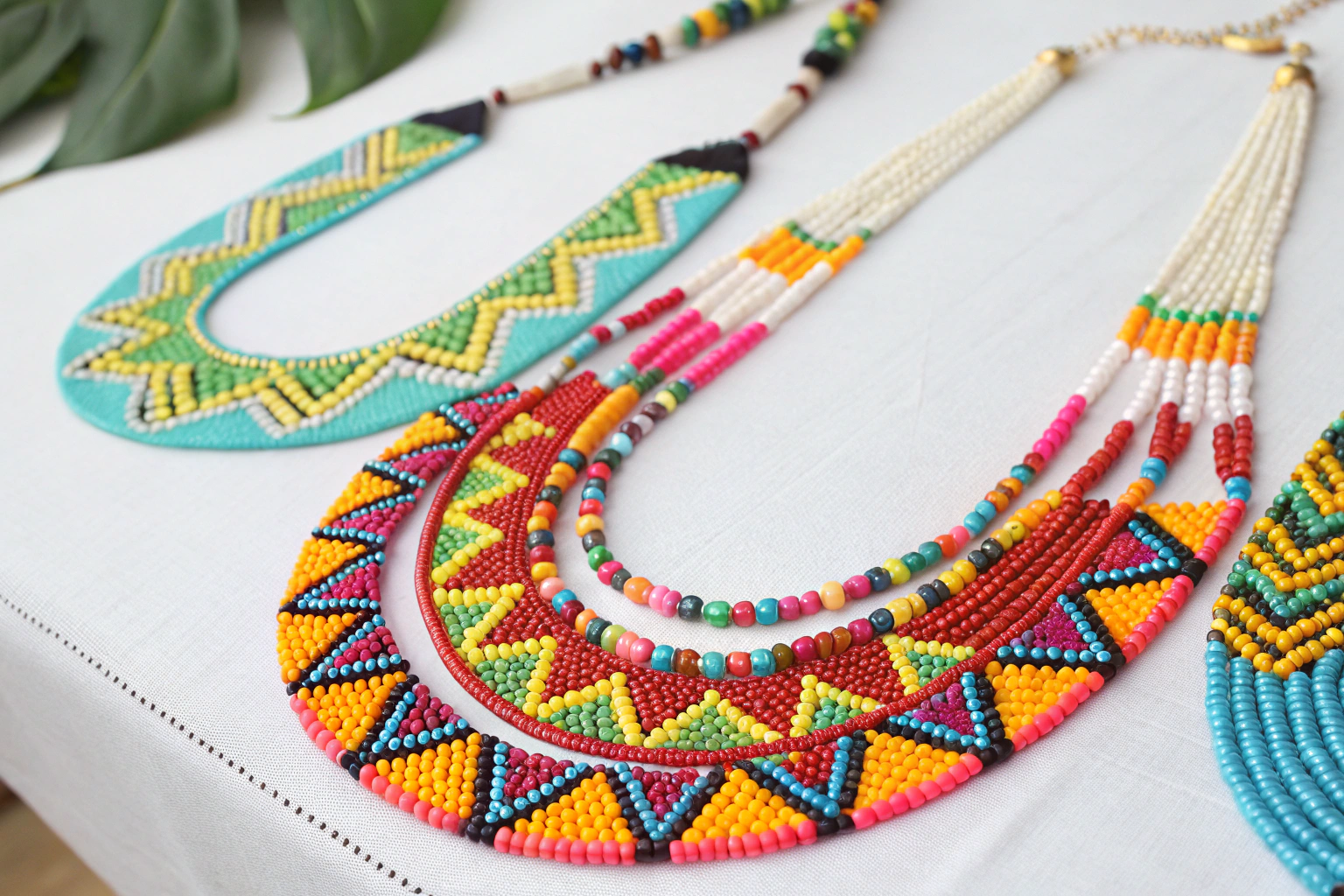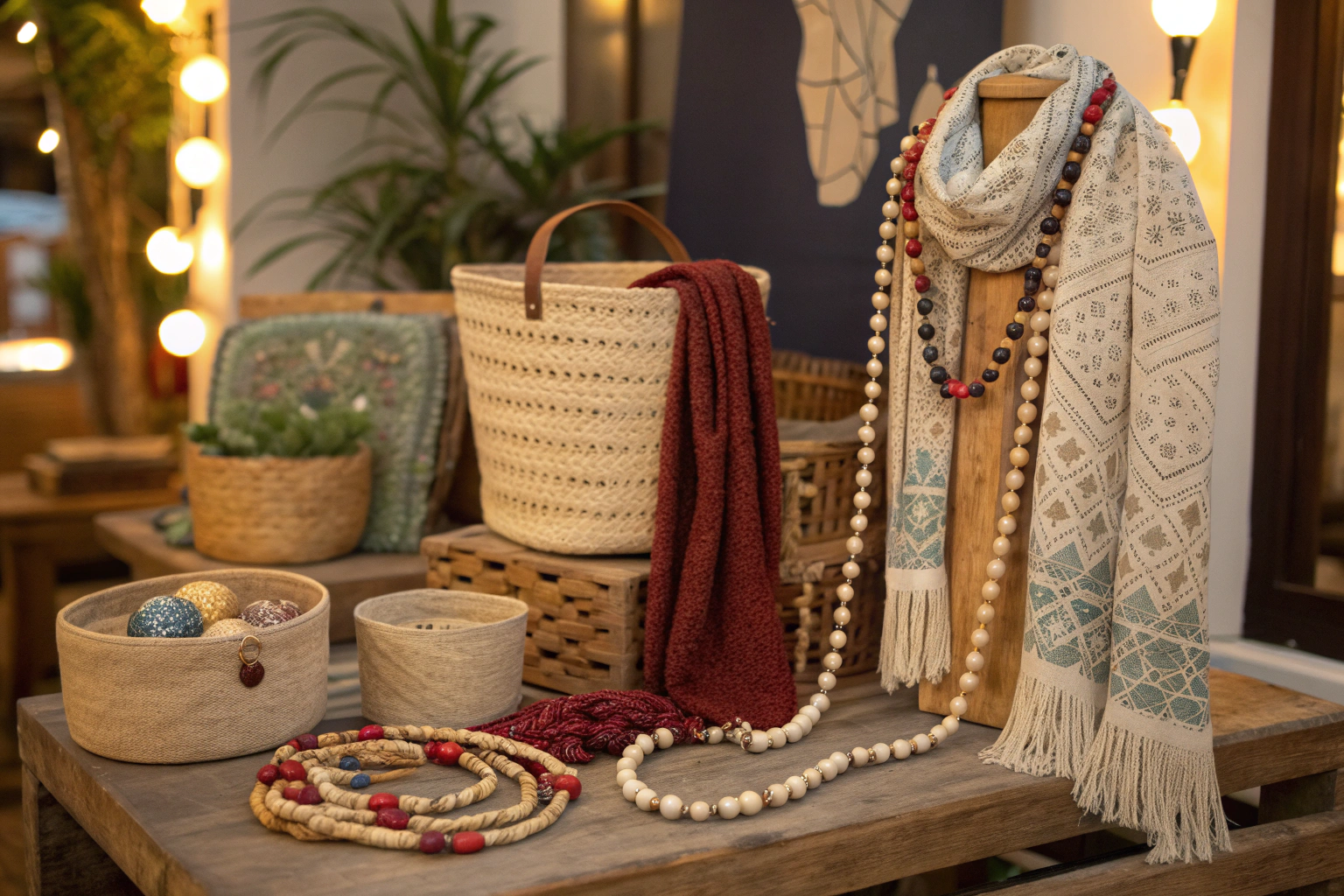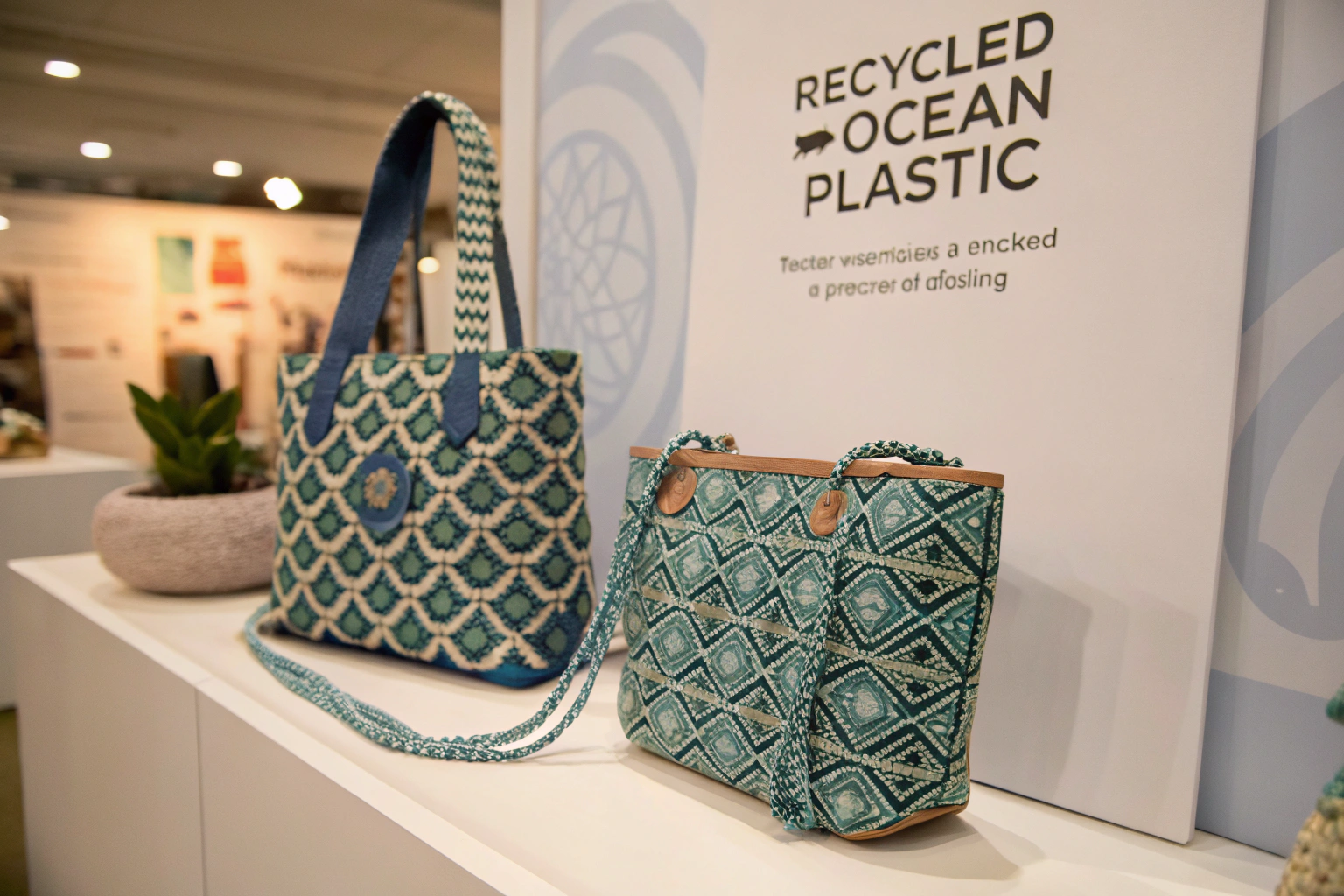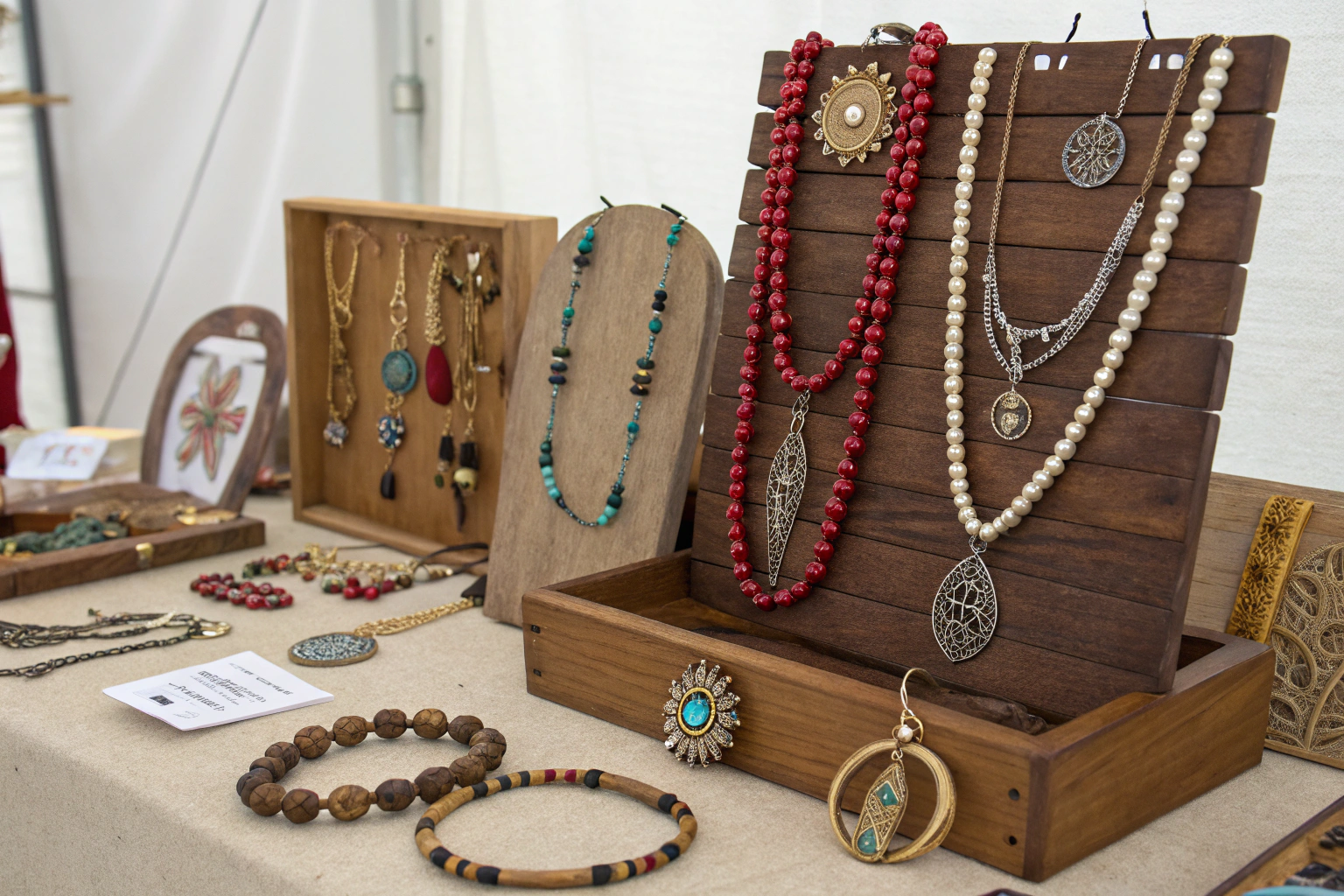Finding accessories with genuine artisanal craftsmanship can feel like searching for a needle in a haystack. You want the unique, handcrafted appeal that mass-produced items lack, but the path is filled with obstacles. Delays, inconsistent quality, and communication gaps can turn a promising project into a logistical nightmare.
The main challenges in sourcing artisanal accessories include finding skilled artisans, ensuring consistent quality at scale, managing higher costs and longer lead times, and navigating complex logistics for delicate handmade goods. Success requires a manufacturer that acts as a bridge, connecting modern supply chain efficiency with traditional craftsmanship. This partnership ensures you get beautiful, authentic products delivered reliably.
Let's break down these challenges and explore practical solutions for importing artisanal accessories successfully.
How to Find Reliable Artisans for Accessory Production?
The first major hurdle is locating true craftspeople. Many suppliers claim "artisanal" quality but lack the genuine skills. The real challenge is verifying authenticity and building a sustainable partnership with artisan communities.
You need a manufacturer with deep, established roots in regions known for specific crafts. At AceAccessory, our base in Zhejiang Province gives us access to a rich network of artisans skilled in embroidery, weaving, and straw braiding. We don't just find them; we build long-term relationships. This ensures they are fairly compensated and motivated to prioritize your orders. It's about creating a sustainable supply chain that benefits everyone.
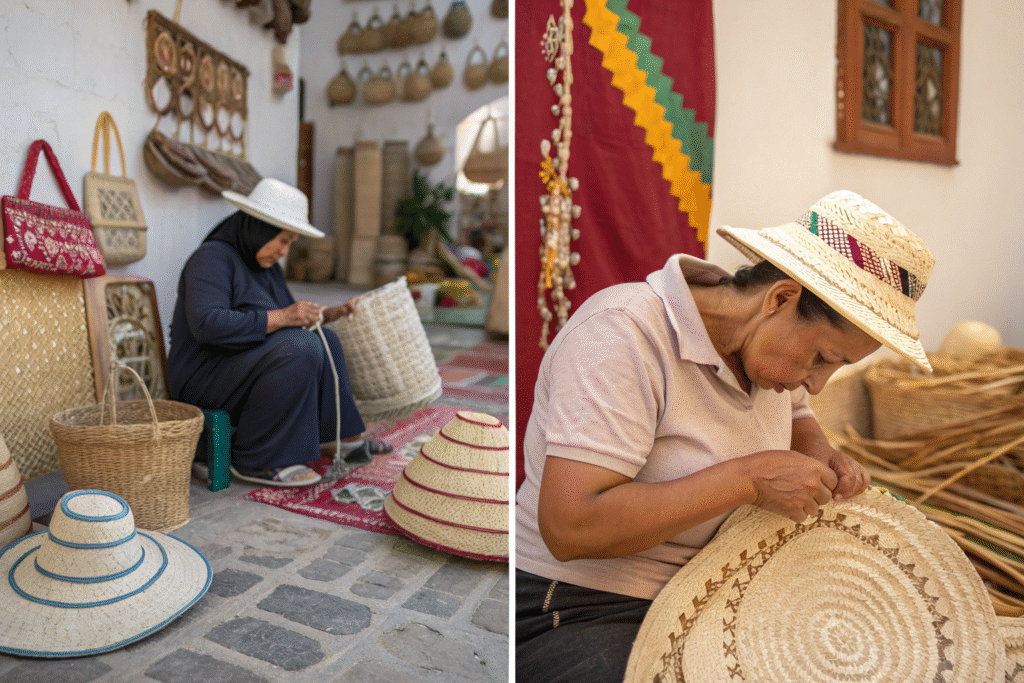
What Regions Specialize in Specific Artisanal Techniques?
Different areas develop unique skills over generations. For example, certain regions in China are renowned for intricate hand embroidery, while others excel in straw weaving for hats and bags. Knowing where to look is half the battle. We leverage our local presence to connect you with the right experts for your specific product, whether it's embroidered gloves or a woven straw bag. This geographic specialization is a key advantage in sourcing authentic craftsmanship.
How to Verify the Authenticity of Artisanal Skills?
Verification is critical. It's easy to claim craftsmanship, but proof is in the portfolio and process. We always arrange sample production before any large order. This allows you to see the artisan's work firsthand. We also document their process with photos and videos. This transparency builds trust and ensures you are getting true handmade products, not machine-made imitations. It's a vital step in quality assurance for artisanal goods.
How to Maintain Quality Consistency in Handmade Items?
Handmade doesn't have to mean unpredictable. The biggest fear for buyers is receiving an order where no two items look the same. Achieving consistency without sacrificing the unique character of handmade goods is a delicate balance.
The solution lies in a robust quality control system tailored to artisan work. Our quality control team creates detailed reference samples and clear guidelines for artisans. They specify acceptable ranges for variations in stitching, dye lots, and dimensions. This framework ensures every hair clip or scarf meets your standards, while still retaining its handmade soul.
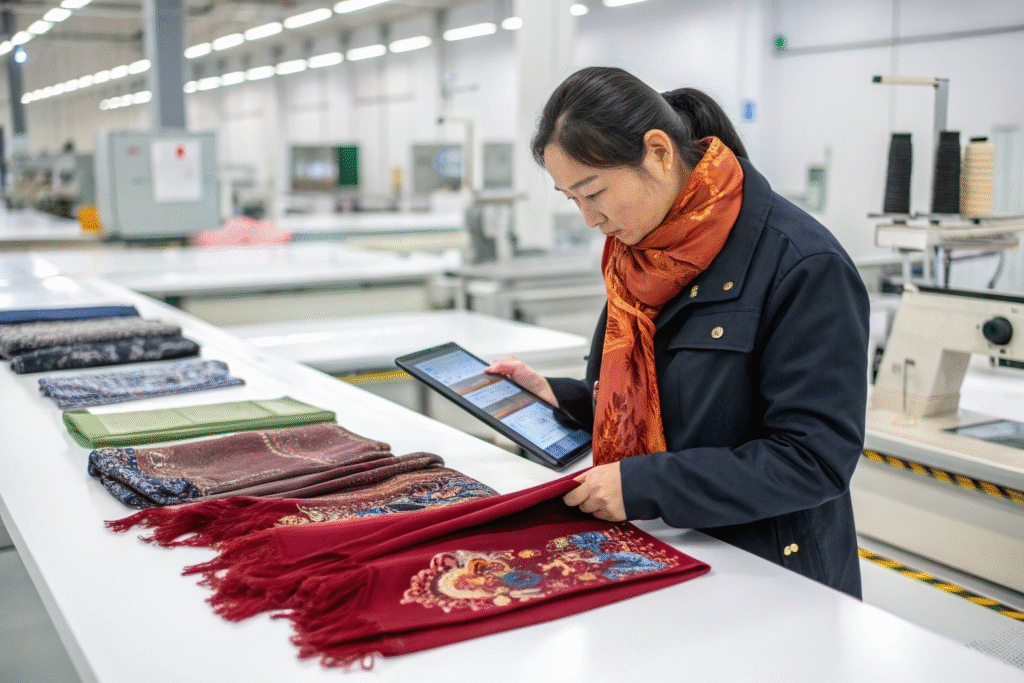
What is a Quality Control Framework for Artisans?
A good framework provides clear benchmarks. We develop a simple visual guide for each project. This guide shows examples of "approved," "rework," and "rejected" items based on specific criteria like stitch length or pattern alignment. This empowers the artisans with clear goals. Our QC staff then conduct frequent spot checks during production. This proactive approach catches issues early and maintains a high level of product quality throughout the entire manufacturing process.
How to Manage Natural Variations in Materials?
Natural materials like straw, wood, or undyed fabrics vary inherently. This can be a feature, not a bug. The key is communication. We educate our buyers about the natural characteristics of these materials upfront. We set clear expectations about color variations or texture differences. This manages expectations and turns potential complaints into appreciated unique selling points for the finished product using sustainable materials.
How to Manage Production Timelines for Handcrafted Goods?
Artisanal work cannot be rushed. Unlike assembly lines, handmade production follows a different rhythm. The challenge is integrating this slower, meticulous process into fast-paced retail calendars without compromising on the craft.
Realistic planning and transparent communication are essential. We start by working with artisans to establish a clear, achievable timeline for each production step. We then build a buffer into the schedule to accommodate the natural unpredictability of handmade creation. This honesty prevents frustration and ensures on-time delivery. Effective project management is the glue that holds it all together.

Why Do Artisanal Techniques Take Longer?
Each step requires human touch and time. Hand-embroidery, for instance, can take days per piece. We break down the timeline for you, showing the time needed for material preparation, crafting, drying (for certain paints or dyes), and finishing. This transparency helps you plan your marketing and sales activities effectively. Understanding the "why" behind the timeline builds a stronger supplier relationship.
How Can Phased Production Help Meet Deadlines?
For large orders, we recommend a phased approach. Instead of producing 10,000 units all at once, we can split the order into smaller batches. This allows us to ship partial quantities to you earlier. It also gives us a chance to incorporate your feedback from the first batch into the next. This method improves supply chain flexibility and helps get products to your market faster through efficient inventory management.
How to Handle Logistics for Delicate Artisanal Products?
Your beautifully crafted accessories have survived production, but now they face the hazards of shipping. Delicate items like embroidered shawls or painted cups are vulnerable to crushing, moisture, and rough handling during transit.
Specialized packaging and expert logistics planning are non-negotiable. We design custom packaging solutions for every fragile artisanal product. This may include rigid boxes, tissue paper interleaving, and custom-fit foam inserts. We also partner with freight forwarders who have experience handling delicate cargo. Our goal is to ensure your products arrive in the same perfect condition they left our facility, navigating customs clearance smoothly.
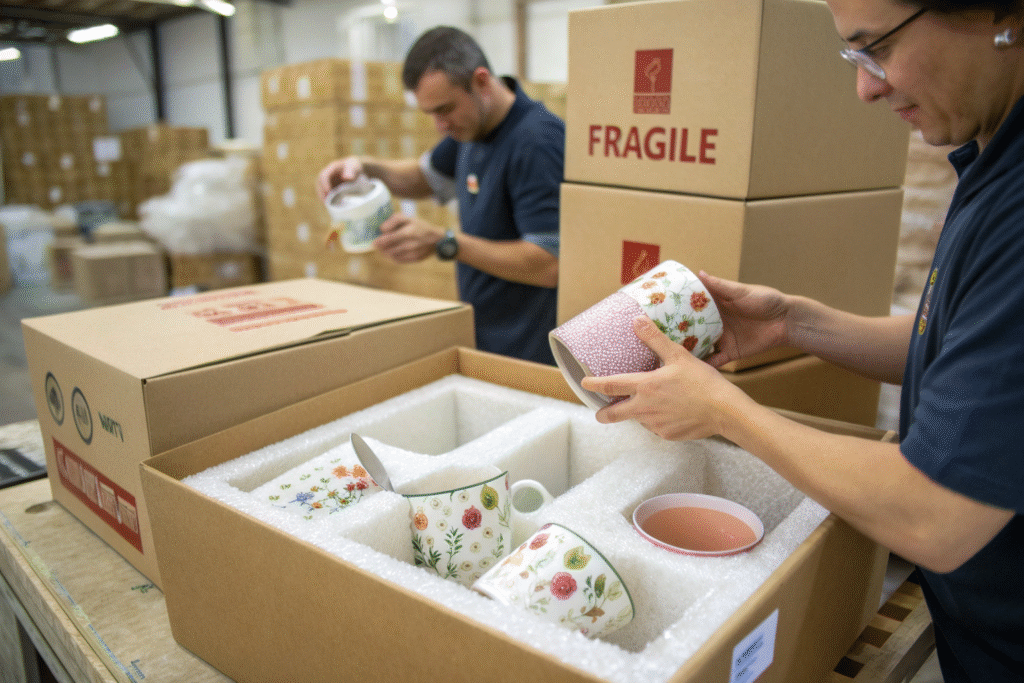
What Packaging Best Protects Delicate Finishes?
Standard packaging often fails. We use anti-scuff coatings for printed surfaces and acid-free tissue to prevent tarnishing on metals. For items with raised embroidery or delicate beading, we create molded pulp or foam cavities that cradle the product without applying pressure. This attention to detail in protective packaging is what preserves the value of the artisan's work using advanced packaging materials.
What Are the Best Shipping Methods for High-Value Handmade Goods?
The choice between air and sea freight depends on value and urgency. For high-value, low-volume artisan items, air freight is often safer and faster, reducing the risk of damage from prolonged transit. We also advise on adequate shipping insurance to protect your investment. We handle all the paperwork, making the complex process of international trade simple for you through reliable freight forwarding services.
Conclusion
Sourcing accessories with artisanal techniques presents unique challenges in finding talent, ensuring quality, managing time, and handling logistics. However, these challenges are not roadblocks. They are manageable with the right manufacturing partner—one that respects the craft while mastering the supply chain. By leveraging established artisan networks, implementing tailored quality control, planning transparent timelines, and using specialized packaging, you can successfully bring unique, handmade products to your market.
If you are looking for a reliable partner to produce your next line of beautiful, artisanal accessories, we invite you to contact us. Our team is ready to provide timely, professional, and reliable service. For a consultation, please reach out to our Business Director Elaine at elaine@fumaoclothing.com. Let's work together to create products that your customers will love.

